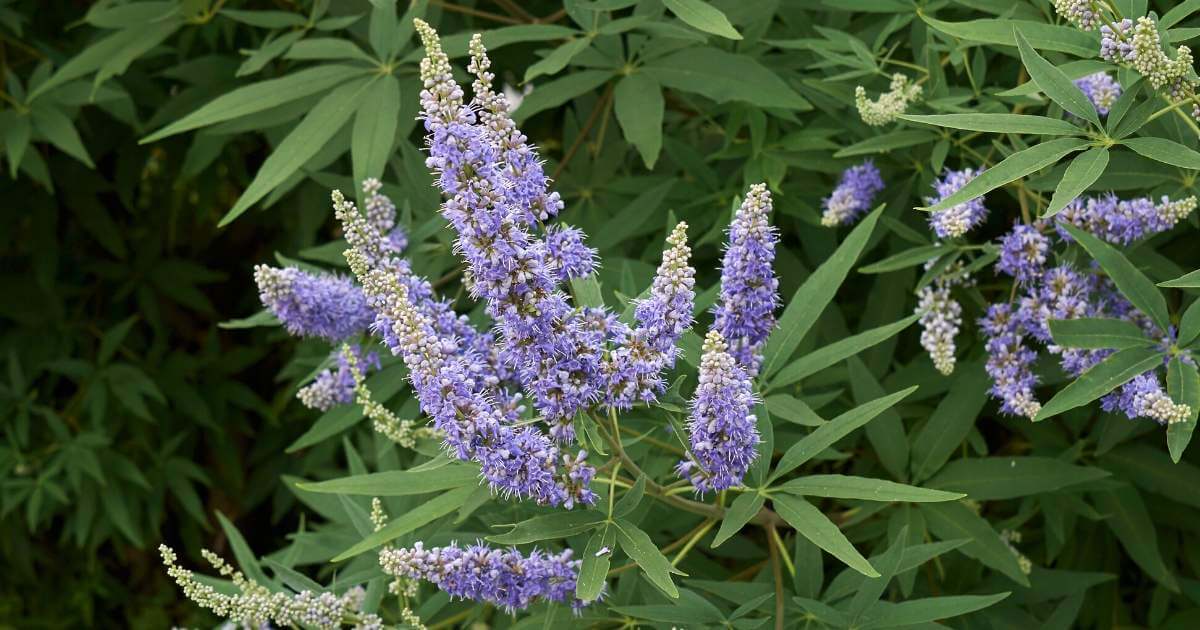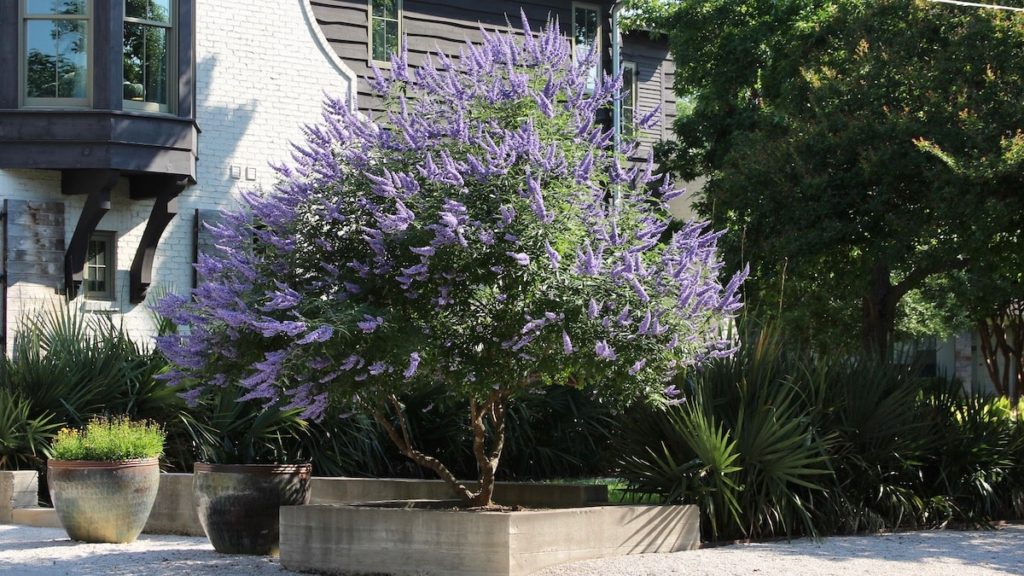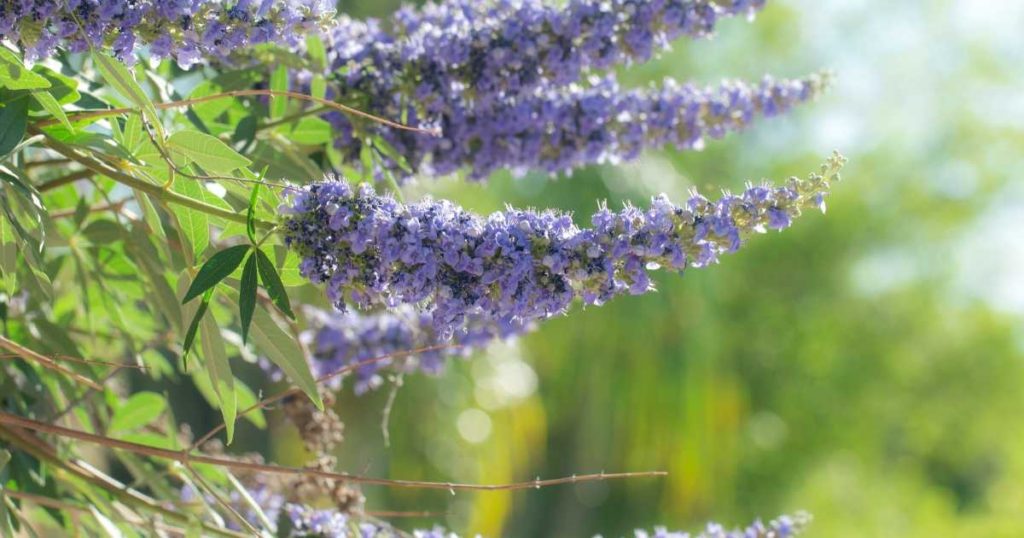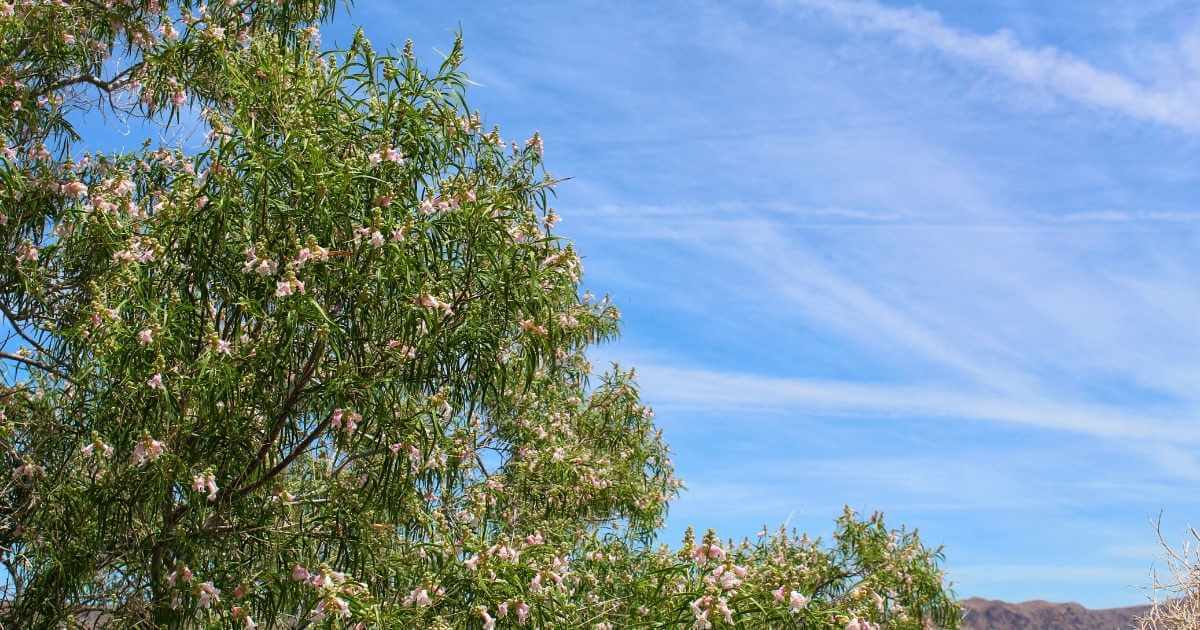
Lavender fireworks celebrate the beginning of June in North Texas. This is when the Vitex or Chaste Tree explodes with fuzzy, purple blossoms. Growing in popularity, Vitex trees are a care-free, earth-wise addition to the North Texas landscape.

Vitex agnus-castus is a deciduous large shrub or small multi-trunk tree originating from the Mediterranean. Hardy to zero degrees and tolerant of intense heat, it is perfect for our North Texas climate. So much so that the ‘Texas Lilac’ group of Vitex trees is named a Texas Superstar by A&M Agrilife.
Texas Superstar® plants undergo years of extensive field trials by Texas A&M AgriLife Research and the Texas A&M AgriLife Extension Service. They must show superior performance under Texas’ tough growing conditions. During the trials, plants receive minimal soil preparation, reasonable levels of water and no pesticides.

The ‘Texas Lilac’ group includes the cultivars ‘Montrose Purple,’ ‘LeCompte,’ and ‘Shoal Creek’.
How to grow a Vitex tree
- Like any large shrub or tree, plant Vitex trees in the fall between September and December. This is because fall weather reduces transplant stress and gives root systems time to grow before the spring growth surge.
- Plant in full sun where it has have room to grow up to 16 feet tall and 16 feet wide.
- fertilizer needs are low.
- You can propagate Vitex trees from cuttings, layering, or collecting volunteer seedlings.
Vitex trees bloom from early summer through fall, but their first flush of blooms in early June are the most eye-catching.
There are some concerns with Vitex trees exhibiting signs of invasiveness, but it is not listed as invasive by the Texas Department of Agriculture or the USDA. A&M deems Vitex safe for use in ornamental settings.((https://texassuperstar.com/plants/vitex/index.html))
Vitex trees are widely available at local garden centers.
- Gardening Gifts That Mom Will Love - May 7, 2024
- New Plant I’m Testing: Kitchen Minis™ Bonsai Basil - April 24, 2024
- Resilient Perennials I’m Adding to My New Landscape - February 28, 2024

